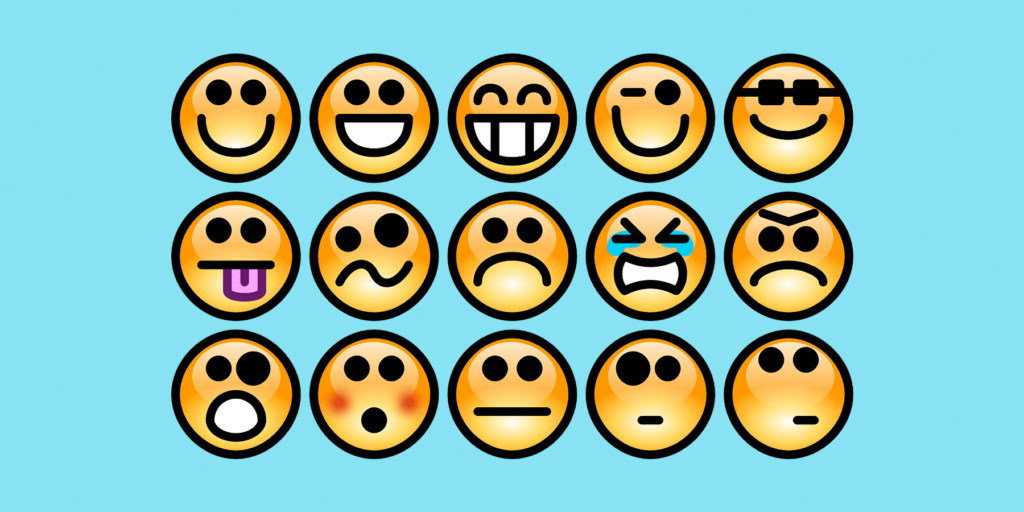Image credit: Pixabay
What turns a new user into a loyal customer? How do you practically go about converting a somewhat-interested stranger into a massively-valuable long-term brand advocate? It isn’t easy, that’s for sure. You need to learn about your prospective customers and come to understand what they want and how you can deliver it— but the basic formula is quite simple.
How can this be the case? Well, it comes down to our emotional motivators: the feelings we desire, the feelings we’d rather avoid, and the lives we fundamentally want to lead. By factoring in these impulses, even when people aren’t aware of them, you can steer their behavior.
Let’s look at how exactly our emotions drive our customer journeys and consider how a modern brand can take advantage of the opportunities they provide for winning customer loyalty.
How emotions drive our decisions
It’s well-established that people don’t make decisions in general (let alone purchasing decisions) in a consistently-rational way. Our subconscious minds have long been thought to play a major role in how we choose how to act, and research in recent years has supported the notion that we subconsciously arrive at decisions before we’re aware of them consciously.
Rooted firmly in the subconscious, of course, is the set of primal impulses and desires that every one of us possesses. Our emotional reactions to things can set us moving down unexpected paths without our conscious minds really getting a say in the matter. If a salesperson in a store unintentionally angers you, you might end up not buying something you wanted to buy, all because the way you feel has taken control.
The leading emotional motivators
Research from the Harvard Business Review identified a huge range of different emotional metrics, and found that the following ten impulses in particular can greatly raise customer value if used correctly:
- Stand out from the crowd
- Have confidence in the future
- Enjoy a sense of well-being
- Feel a sense of freedom
- Feel a sense of thrill
- Feel a sense of belonging
- Protect the environment
- Be the person you want to be
- Feel secure
- Succeed in life
Through providing opportunities for customers to feel that they are fulfilling these emotional motivators, a business can swiftly move them through tiers of customer loyalty, incrementally getting them more attached to the brand and making them significantly more valuable to the company in the process.
Why we demand more than ever before
Emotional impulses have always been extremely effective in advertising, but they’re more important now than ever before because the convenience of the internet has raised customer service expectations across the board. Any business that wants to keep up must adopt a multi-channel approach.
Years back, a customer might have stuck with a company owing simply to the prospective inconvenience of moving to a different one, but that isn’t really an issue now. If you don’t like an online store, there are thousands of others you can find, visit and register with in a matter of seconds.
And since companies can’t effectively stand out through the pricing of branded items when they’re all buying from the same sources, they must look for other ways to set themselves apart. That’s where emotional motivators become vital. If you can understand what your customers’ emotional needs are, you can cater to them in your customer journey without having to significantly alter the product or service you’re providing.
Tying CX stages into desires
You should keep the top emotional motivators in mind at every state of your sales funnel, whether the users are on your website, in your email marketing, or through your social media channels, because these basic drives never really change. How exactly you should make use of them depends on the context, though:
- On your website, be reassuring, helping customers to feel secure and comfortable. The closer they get to converting, the more wary they will be of being tricked or misled, so keep taking action to address that reluctance with confidence-boosting points such as money-back guarantees, customer support channels, and social proof.
- In your email marketing, you’re addressing users familiar with you already, so try to tantalize them with the prospect of an exciting, successful future in which whatever you’re offering has helped them become the person they want to be. Keep the design simple (use some simple email campaign templates for inspiration) and the message bold and punchy.
- Through your social media channels, engender that all-important sense of communal belonging, and establish a clear brand identity so that your followers will feel that they are setting themselves apart by associating with you. If you can get them to feel protective of your business, you can build them into valuable brand advocates.
You don’t have to stick rigidly to the highest-impact motivators, or ham-fistedly shove them into every piece of copy you write— they’re just elements you should keep in mind when you’re adjusting your CX and try to target whenever you can do so without reducing the quality of your content.
Review your entire sales funnel and answer this question: How are you addressing the major emotional motivators at each stage of the process? What are you getting wrong, or not doing at all? Improve your overall method however you can, and you’ll find that it goes a long way towards keeping your customers happy and inclined to stick around.
Author’s Bio: Kayleigh Alexandra is a content writer for Micro Startups — a site dedicated to spreading the word about startups and small businesses of all shapes and sizes. Visit the blog for the latest marketing insights from top experts and inspiring entrepreneurial stories.
